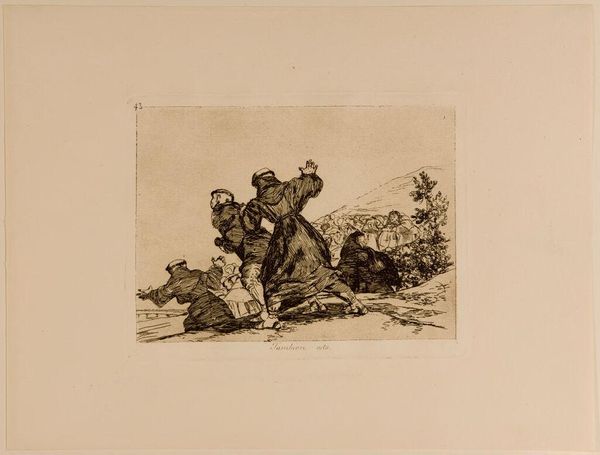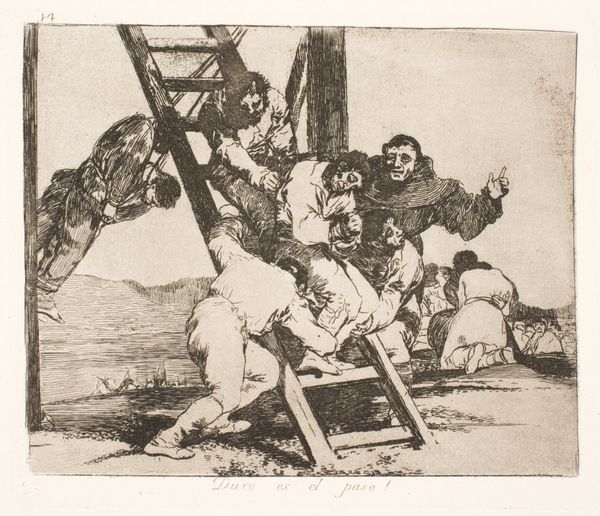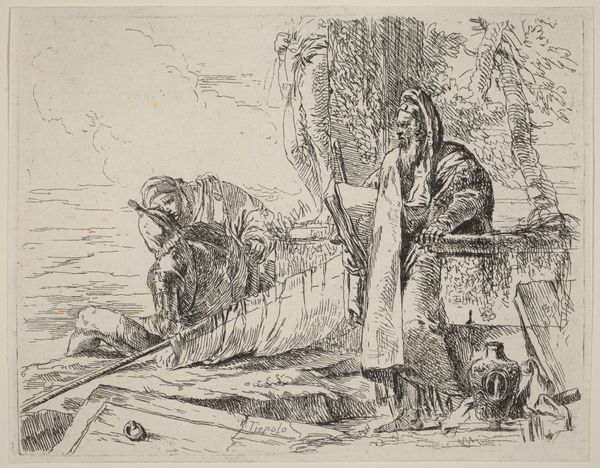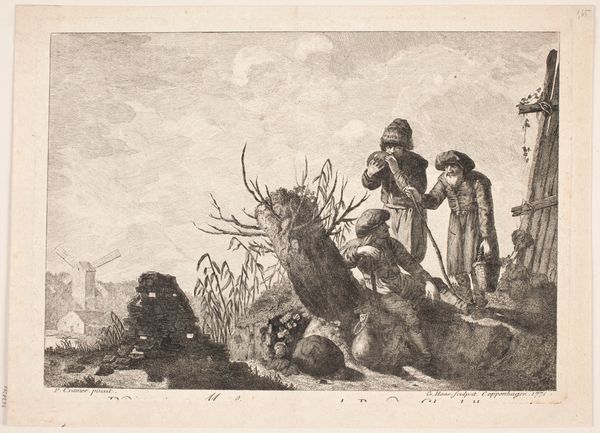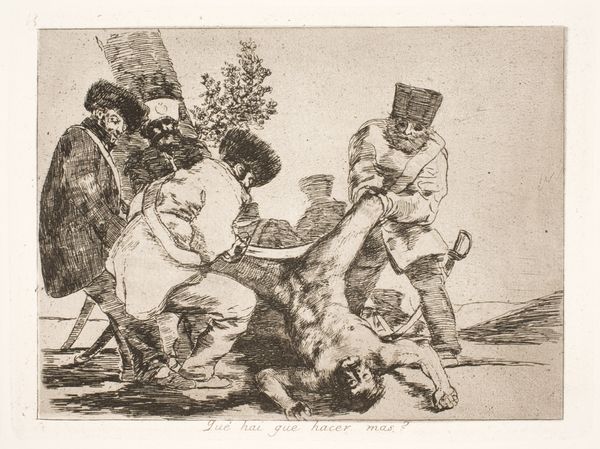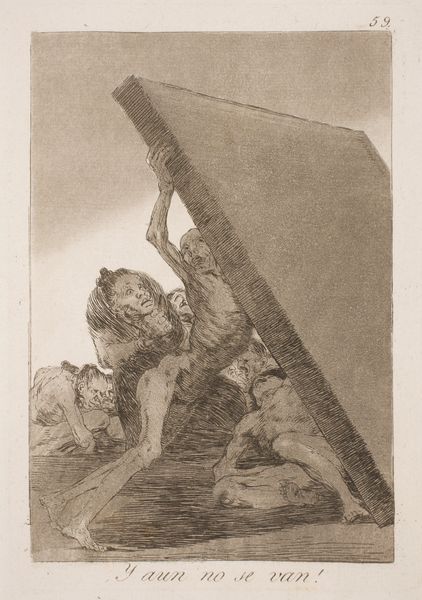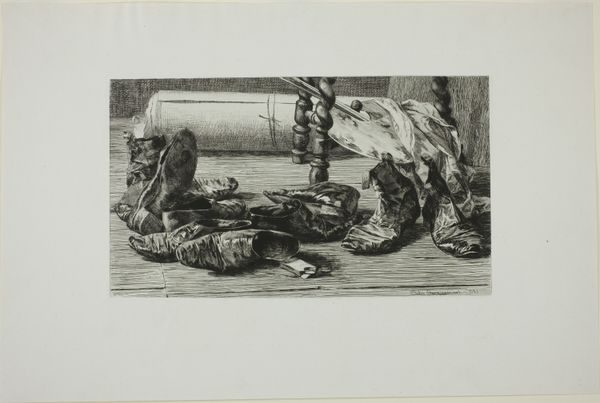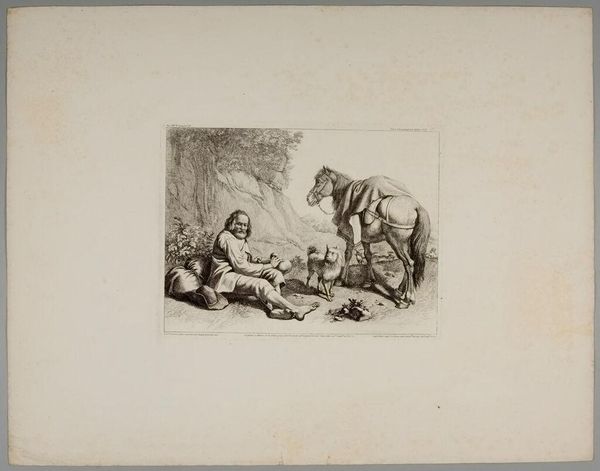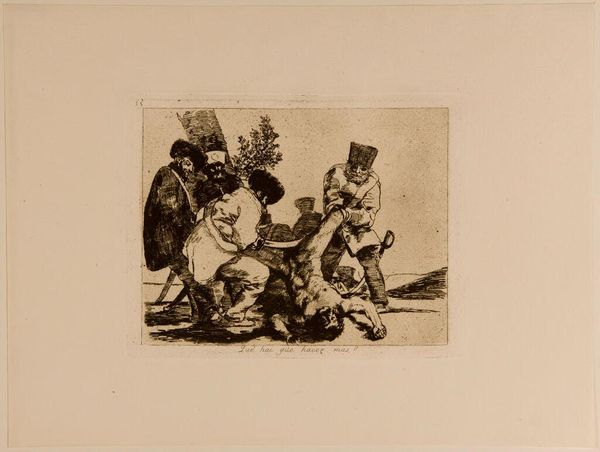
drawing, print, etching, engraving
#
drawing
#
narrative-art
# print
#
etching
#
landscape
#
figuration
#
line
#
engraving
#
realism
Copyright: National Gallery of Art: CC0 1.0
Editor: So, this is "The Winch" by Perry Oliver. It's a print, likely an etching or engraving, showing figures on what seems to be a dock, hauling something with a winch. The scene is really stark, almost brutal in its depiction of labor. What strikes you most about this work? Curator: The materiality itself speaks volumes. The etched lines, the evident pressure of the printing process – they emphasize the labor both within and *behind* the image. Consider how this print, with its potential for reproduction, democratizes access to this scene of labor. Does it valorize, or critique the toil represented? Editor: I see what you mean about the labor inherent in its creation. The artist, too, is engaged in a form of production. It's interesting to consider the contrast between the physical work within the scene and the artist's own handiwork in depicting it. What do you think the artist is trying to communicate about labor? Curator: Let's think about the winch itself. It's a technology designed to ease labor, yet it clearly still requires significant effort from these figures. How does Oliver present this technology? As a tool of liberation, or simply a modification of older forms of strenuous labor? Editor: Perhaps neither. It seems to show how technology mediates labor but doesn't eliminate it, just reshapes it. And printing enables a wider distribution and even potentially turns laborers themselves into consumers and audience. Curator: Precisely. The artist's choice of medium invites a consideration of not just *what* is depicted, but *how* it is circulated and consumed within a wider economy. So what have we learned about labor, media and materiality? Editor: I now see this image as more than just a depiction of work, but a statement about how art and its means of distribution intersect with, and comment on, real-world labor. Thanks for the insight.
Comments
No comments
Be the first to comment and join the conversation on the ultimate creative platform.

